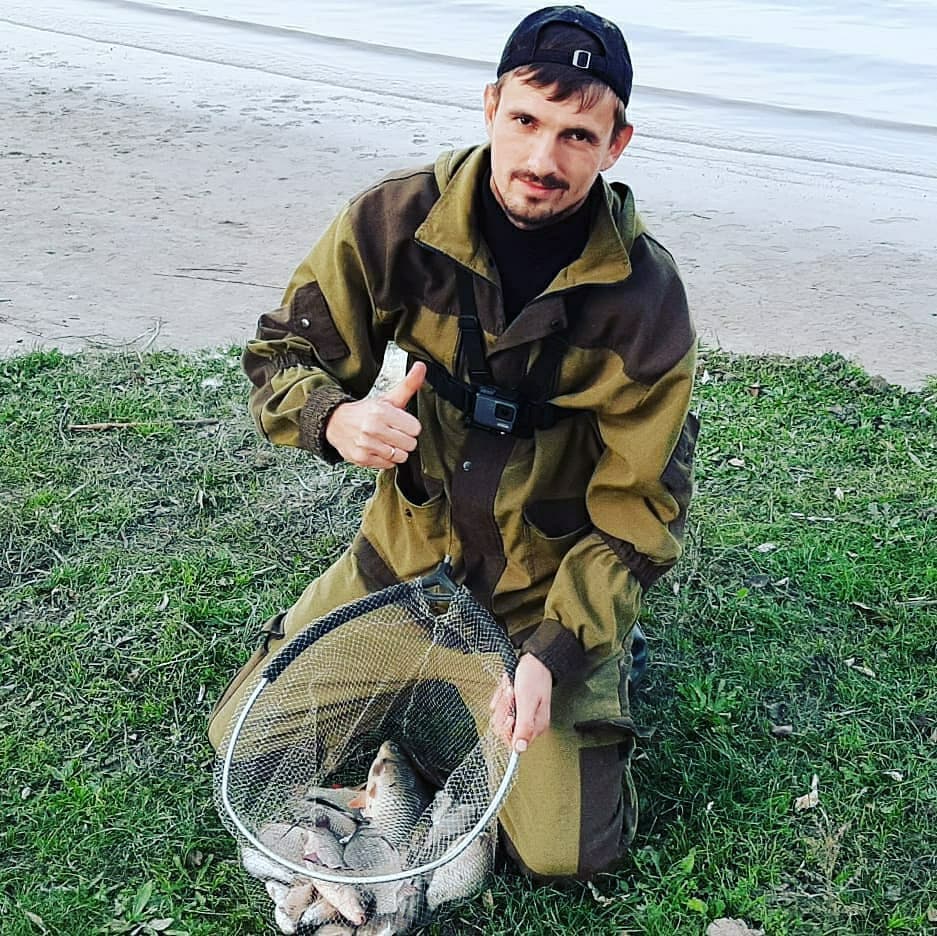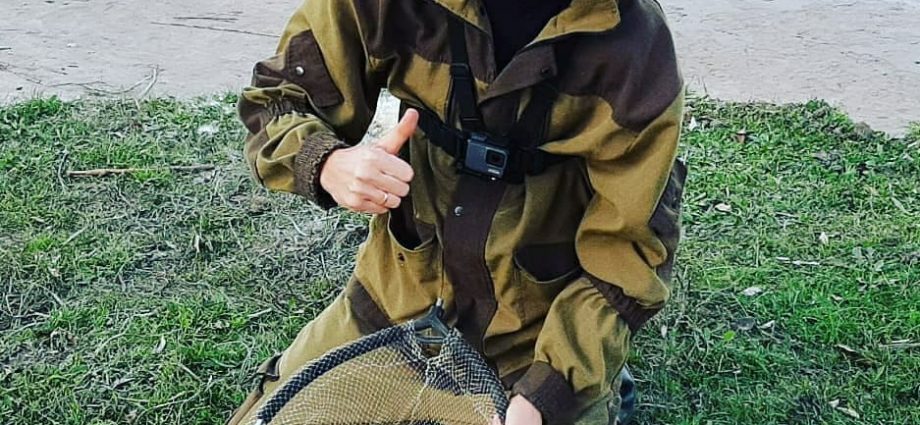Садржај
Donka with a rubber shock absorber (elastic band) is one of the most catchy and comfortable gear for bream fishing. Due to its simple and reliable design, the rubber band can be successfully used for bream fishing on rivers, large lakes, and reservoirs. At the same time, the catchability of this equipment is very often much higher than that of popular feeders and match float rods.
On the shelves of modern fishing stores, this equipment is almost impossible to find; it is easier to make it yourself. Self-assembly of the rubber band does not require the purchase of expensive materials and components
What is the tackle made of?
The equipment of a classic elastic band consists of the following parts:
- The main fishing line is 50 meters of braided cord 0,2-0,22 mm thick or monofilament with a cross section of 0,35-0,4 mm.
- Working area with leashes – a removable 4-meter section of monofilament fishing line with 5-6 leashes 20-25 cm long. The working leash area is located between the rubber shock absorber and the main fishing line.
- Rubber shock absorber 15-16 meters long.
- A nylon cord with a lead sinker weighing from 200-250 (when casting from the shore) to 800-1000 grams (for tackle that is brought to the fishing point using a boat).
- Cargo foam buoy (float) with a nylon cord – serves as a guideline when pulling cargo from a boat.
For winding fishing line used:
- round plastic self-dump reels;
- large inertial coils (Nevskaya, Donskaya)
When used for winding fishing line on an inertial reel, it is installed on a rigid spinning rod with a length of 180 to 240-270 cm, made of a composite mixture or fiberglass.
The simplest, budgetary and reliable rod for fishing with an elastic band is the “Crocodile” with a length of 210 to 240 cm with a test of up to 150-200 grams.
Choosing a place for fishing with an elastic band
The first component of successful bottom bream fishing is the right choice of location.
На реци
On large and medium rivers, places such as:
- stretches with depths from 4 to 6-8 meters;
- edges of channel and coastal ditches;
- coastal dumps;
- local pits and whirlpools with a hard clayey, pebbly bottom;
- vast straits bordering great depths.
На језеру
On flowing large lakes for catching bream, this tackle is suitable for such places as:
- deep areas with a hard bottom covered with a small layer of silt;
- straits located near pits and whirlpools;
- large shallow waters ending in a deep slope;
- mouths of streams flowing into the lake, small rivers.

To the reservoir
On reservoirs, bream is caught on donkeys on the so-called tables – vast areas with depths from 4 to 8-10 meters. Also, various anomalies of the bottom relief can be very catchy – “navels”, pits, depressions.
Choice of fishing time
Пролеће
In the spring, fishing for elastic is the most catchy before the start of spawning of bream, which falls on the beginning – mid-May. At this time, bottom gear is thrown from the shore, since in most regions there is a spawning ban, during which it is impossible to move through the reservoirs on boats, boats and other watercraft.
In the spring, for catching bream on an elastic band, shallows located at some distance from the coast, bordering on pits, are chosen.
Лето
The most catchy summer month for bream fishing is August. At this time, bream is caught with an elastic band in deep channel and coastal ditches, on extensive deep-sea tables of reservoirs, dumps and irrigation bordering on the depths. During the day, the most catchy periods are morning evening dawns, warm and clear nights.
Јесен
In early autumn, bream is caught in summer camps – channel edges and dumps, pits and whirlpools, straits bordering on dumps and depths. In contrast to summer, at the beginning of autumn, the bream begins to actively peck during the daytime.
With the onset of cold weather and a gradual decrease in water temperature, the fish stray into flocks and roll into deep wintering pits. In them, the bream does not feed as actively as in summer, leaving for feeding on dumps, upper edges, shallows near the pits.
Млазнице
For fishing with an elastic band, such vegetable nozzles are used as:
- pea porridge;
- грашак;
- прекрупа од јечма;
- конзервирани кукуруз.
Of the baits for this gear are used:
- крвавице;
- маидсервант;
- large dung worm;
- bark beetle.
Намамити
An obligatory technique when fishing for bream with an elastic band is baiting with such mixtures as:
- pea porridge;
- steamed grogh with barley or pearl barley;
- pea porridge mixed with breadcrumbs.
You can add a small amount of store-bought bait to homemade bait.
The choice of the type and amount of flavor added to the bait depends on the fishing season:
- in autumn and spring, garlic and hemp extracts are added to bait mixtures;
- in summer, bait mixtures richly flavored with anise, sunflower oil, honey, sugar, various sweet store-bought liquids and dips (caramel, chocolate, vanilla) are more attractive for bream.
When using store flavors (liquids), it is necessary to strictly follow the recommendations for their use indicated, as a rule, on the label – if the dosage is not observed, the bait will stop working and will not attract, but scare away the fish with its pungent smell.
Техника пецања
The most common rubber band fishing using a boat consists of the following manipulations:
- At 5-6 meters from the water’s edge, a meter-long peg with a cut in the upper part is stuck into the shore.
- The rubber shock absorber is unwound from the reel, laying neat rings near the water.
- A nylon cord with a sinker is attached to the loop at one end of the elastic band.
- The end of the main line with the attached carabiner and swivel is fixed in the split of the peg.
- To the swivel at the end of the main line and the carabiner in the loop of the rubber shock absorber, the ends of the line segments (working area) with leashes are tied.
- A sinker with a buoy (cargo float) and a rubber shock absorber attached to it on a boat is taken 50-60 meters from the shore and thrown into the water
- A rod with a reel, on which the main line is wound, is installed on two pokes.
- The instantaneous brake is turned off on the reel, allowing the main line to bleed until a clearly visible slack forms on it.
- After the main line has ceased to bleed on its segment near the tulip, the rods make a small loop.
- They exhaust the entire equipment until the appearance of a section with leashes, after which the fishing line is again fixed in the splitting of the peg.
- Large pieces of white foam are put on the hooks of the first and last leashes.
- The tackle is removed from the split of the peg, the rod is again placed on the poke.
- The line is bled until a loop appears.
- On the boat, they sail to the pieces of foam plastic that are clearly visible in the water on the hooks of the extreme leashes.
- Bait balls are thrown between the pieces of foam.
- After feeding is completed, they go back to shore.
- They exhaust the working area with leashes, fix the fishing line in the split of the peg.
- Pieces of foam are removed from the hooks of the extreme leashes.
- Bait tackle.
- Having freed the fishing line from the splitting of the peg, it is pitted until a loop appears.
For timely notification of a bite when fishing with an elastic band, a tandem of an electronic signaling device and a swinger is used.
Making tackle with your own hands
Материјали и алати
Of the tools in the manufacturing process of this equipment you will need:
- sharp knife or scissors;
- авл;
- брусни папир.
Materijali
- monofilament fishing line with a cross section of 0,35-0,4 mm;
- leash fishing line with a section of 0,2-0,22 mm;
- rubber shock absorber 15-16 meters long
- 5-6 hooks No. 8-12;
- окретни са карабином;
- копча;
- kapron cord;
- lead sinker weighing 500 grams;
- a piece of dense foam or cork;
- 2 long 3 cm cambric;
- 5-6 short centimeter cambric.
Процес инсталације
A donkey with a rubber shock absorber is made as follows:
- 50-100 meters of main line are wound on the reel.
- A carabiner with a swivel is tied to the end of the main line.
- On a 4-5-meter piece of fishing line, 6 pairs of knots are made. At the same time, in front of each of them, a short centimeter cambric is put on the fishing line.
- Between each of the pair of knots, 20-25 cm leashes with hooks are fixed using the loop-to-loop method.
- Long cambric are put on the ends of the working section of the fishing line, after which two loops are made with their help.
- Hooks of leashes are fixed in short cambric.
- The working area is wound on a small reel
- Two loops are made at the ends of the rubber shock absorber, in one of which a carabiner is fixed with a noose. After that, the gum is wound on a capacious wooden reel.
- A square float with cutouts is cut out of a piece of dense foam plastic, on which 10-15 meters of nylon cord are wound. The finished float is processed with sandpaper and an awl.
- A meter-long piece of nylon cord with a loop at the end is tied to the sinker.
- The equipment is assembled directly on the reservoir and consists in connecting the working area with a fishing line and a shock absorber, to which pieces of a nylon cord with a sinker and a cargo buoy (float) are attached.
Корисни савети
In addition to the basics of fishing for bream with an elastic band, it is very important to consider the following useful tips from experienced anglers:
- For fishing with an elastic band, you should carefully clean the shore from various debris.
- It is undesirable to use bricks, fragments of pipes and other heavy objects as a sinker, which, after the completion of fishing, will most likely be torn off from the equipment and left at the bottom.
- The gum is stored on a wooden reel in a dry and cool place.
- To search for promising places, boat echo sounders or a feeder rod with a marker sinker are used.
- Fishing with a rubber band is better with a partner – it is more convenient for two to lay out and prepare tackle, bring weights on a boat to a fishing point, and cast bait.
- In windy weather and with strong currents, it is better to use a thin braided line as the main fishing line.
Fishing for bream with an elastic band is forgotten in vain, this option of tackle allows you to get trophy fish in a simple way at minimal cost.










